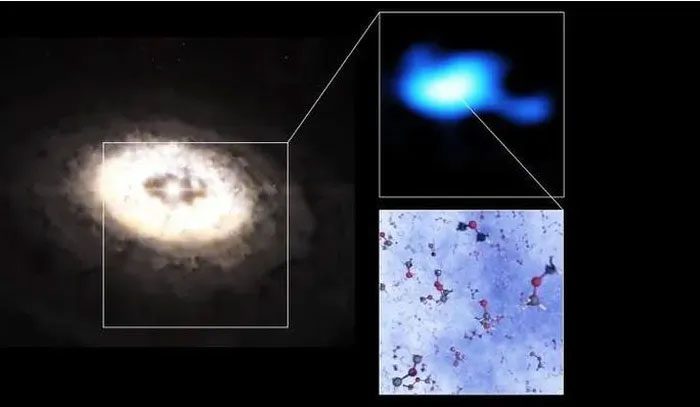The largest molecule found in a dust and gas disk surrounding a small star has been identified. It is a building block of life.
According to Science Alert, while exploring the swirling cloud around the star IRS 48, scientists discovered signs of dimethyl ether, a molecule containing 9 atoms. This oxygen-bearing molecule could serve as a building block for sugars and other biological molecules, meaning we can consider it a prebiotic compound.

Close-up of strange molecules, building blocks of primordial life, wandering in a protoplanetary disk – (Photo: ALMA)
“From this discovery, we can learn more about the origins of life on our planet and thus gain a better idea of the potential for life in other planetary systems,” said astronomer Nashanty Brunken from Leiden University (Netherlands), a member of the research team.
Dimethyl ether consists of 2 carbon atoms, 6 hydrogen atoms, and one oxygen atom, with the chemical formula CH3OCH3.
These molecules are believed to form in cold star-forming regions, existing before stars themselves are formed.
This discovery stems from observations in the disk surrounding IRS 48, a star located 444 light-years away in the constellation Ophiuchus, where scientists detected an asymmetrical crescent shape acting as a “dust trap.“
This dust trap has produced many complex molecules, which can coalesce into larger clumps, potentially forming comets, asteroids, or even planets.
As the star’s radiation reaches the dust trap, it causes ice to sublimate. Consequently, using the powerful ALMA telescope located in Chile, scientists were able to detect signs of these molecules based on spectral data.
This intriguing discovery also suggests that our “ancestral” molecules may have been wandering through the universe long before Earth was formed.
The research was recently published in the scientific journal Astronomy & Astrophysics.





















































